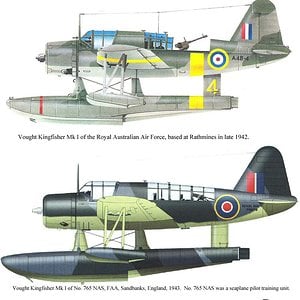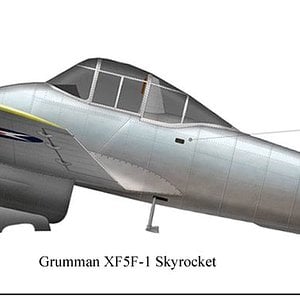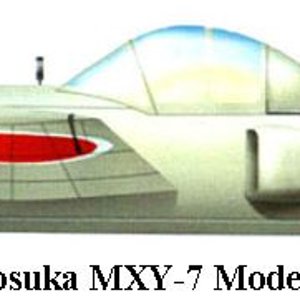Navigation
Install the app
How to install the app on iOS
Follow along with the video below to see how to install our site as a web app on your home screen.
Note: This feature may not be available in some browsers.
More options
You are using an out of date browser. It may not display this or other websites correctly.
You should upgrade or use an alternative browser.
You should upgrade or use an alternative browser.
The Vultee BT-13 Valiant was an American World War II-era basic trainer aircraft built by Vultee Aircraft for the United States Army Air Corps, and later US Army Air Forces. A subsequent variant of the BT-13 in USAAC/USAAF service was known as the BT-15 Valiant, while an identical version for the US Navy was known as the SNV and was used to train naval aviators for the US Navy, US Marine Corps and US Coast Guard.
The Vultee BT-13 was the basic trainer flown by most American pilots during World War II.
Due to the demand for this aircraft, and others which used the same Pratt & Whitney engine, some were equipped with Wright powerplants of similar size and power built in 1941-42. The Wright-equipped aircraft were designated BT-15.
The US Navy adopted the P&W powered aircraft as their main basic trainer, designating it the SNV. The BT-13 production run outnumbered all other Basic Trainer (BT) types produced.
The Vultee P-66 Vanguard was an accidental addition to the USAAF's inventory of fighter aircraft. It was initially ordered by Sweden, but by the time the aircraft were ready for delivery in 1941, the United States would not allow them to be exported, designating them as P-66s and retaining them for defensive and training purposes. Eventually, a large number were sent to China where they were pressed into service as combat aircraft with indifferent results.
The Vultee A-31 Vengeance was an American dive bomber of World War II, built by Vultee Aircraft. The Vengeance was not used in combat by US units, however it served with the British Royal Air Force, the Royal Australian Air Force, and Indian Air Force in Southeast Asia and the Southwest Pacific.
The aircraft was described as being stable in flight and in a dive, with heavy elevator and rudder control, but with light aileron control. Forward visibility was considered poor due to the large radial engine. There were a number of fatal accidents with the Vengeance due to improper dive procedures and a center of gravity problem when the aircraft was flown with the rear cockpit canopy open, but without a rear gunner.
In combat, the type was considered rugged, reliable, stable, and generally well-behaved. Commonwealth forces operated the type from May 1942 to July 1944. Burma tended to be a low priority for Allied air planners, and forces in that theater got what was left over. Aircraft such as the Vickers Wellington and Hawker Hurricane spent their last days in Burma. The Vengeance saw considerable action attacking Japanese supply, communications and troop concentrations in Burma. Its service in that theater has been described as sterling. At best the Vengeance was a qualified success in Burma, doing much to hold the line against Japanese advances.
The Vultee bomber remained in service, mainly in the target-tug role, until 1945.
Info: Wikipedia
http://en.wikipedia.org/wiki/Vultee_BT-13_Valiant
http://en.wikipedia.org/wiki/Vultee_P-66_Vanguard
http://en.wikipedia.org/wiki/Vultee_A-31_Vengeance
Profiles: Wings Palette
http://wp.scn.ru/en/
The Vultee BT-13 was the basic trainer flown by most American pilots during World War II.
Due to the demand for this aircraft, and others which used the same Pratt & Whitney engine, some were equipped with Wright powerplants of similar size and power built in 1941-42. The Wright-equipped aircraft were designated BT-15.
The US Navy adopted the P&W powered aircraft as their main basic trainer, designating it the SNV. The BT-13 production run outnumbered all other Basic Trainer (BT) types produced.
The Vultee P-66 Vanguard was an accidental addition to the USAAF's inventory of fighter aircraft. It was initially ordered by Sweden, but by the time the aircraft were ready for delivery in 1941, the United States would not allow them to be exported, designating them as P-66s and retaining them for defensive and training purposes. Eventually, a large number were sent to China where they were pressed into service as combat aircraft with indifferent results.
The Vultee A-31 Vengeance was an American dive bomber of World War II, built by Vultee Aircraft. The Vengeance was not used in combat by US units, however it served with the British Royal Air Force, the Royal Australian Air Force, and Indian Air Force in Southeast Asia and the Southwest Pacific.
The aircraft was described as being stable in flight and in a dive, with heavy elevator and rudder control, but with light aileron control. Forward visibility was considered poor due to the large radial engine. There were a number of fatal accidents with the Vengeance due to improper dive procedures and a center of gravity problem when the aircraft was flown with the rear cockpit canopy open, but without a rear gunner.
In combat, the type was considered rugged, reliable, stable, and generally well-behaved. Commonwealth forces operated the type from May 1942 to July 1944. Burma tended to be a low priority for Allied air planners, and forces in that theater got what was left over. Aircraft such as the Vickers Wellington and Hawker Hurricane spent their last days in Burma. The Vengeance saw considerable action attacking Japanese supply, communications and troop concentrations in Burma. Its service in that theater has been described as sterling. At best the Vengeance was a qualified success in Burma, doing much to hold the line against Japanese advances.
The Vultee bomber remained in service, mainly in the target-tug role, until 1945.
Info: Wikipedia
http://en.wikipedia.org/wiki/Vultee_BT-13_Valiant
http://en.wikipedia.org/wiki/Vultee_P-66_Vanguard
http://en.wikipedia.org/wiki/Vultee_A-31_Vengeance
Profiles: Wings Palette
http://wp.scn.ru/en/








